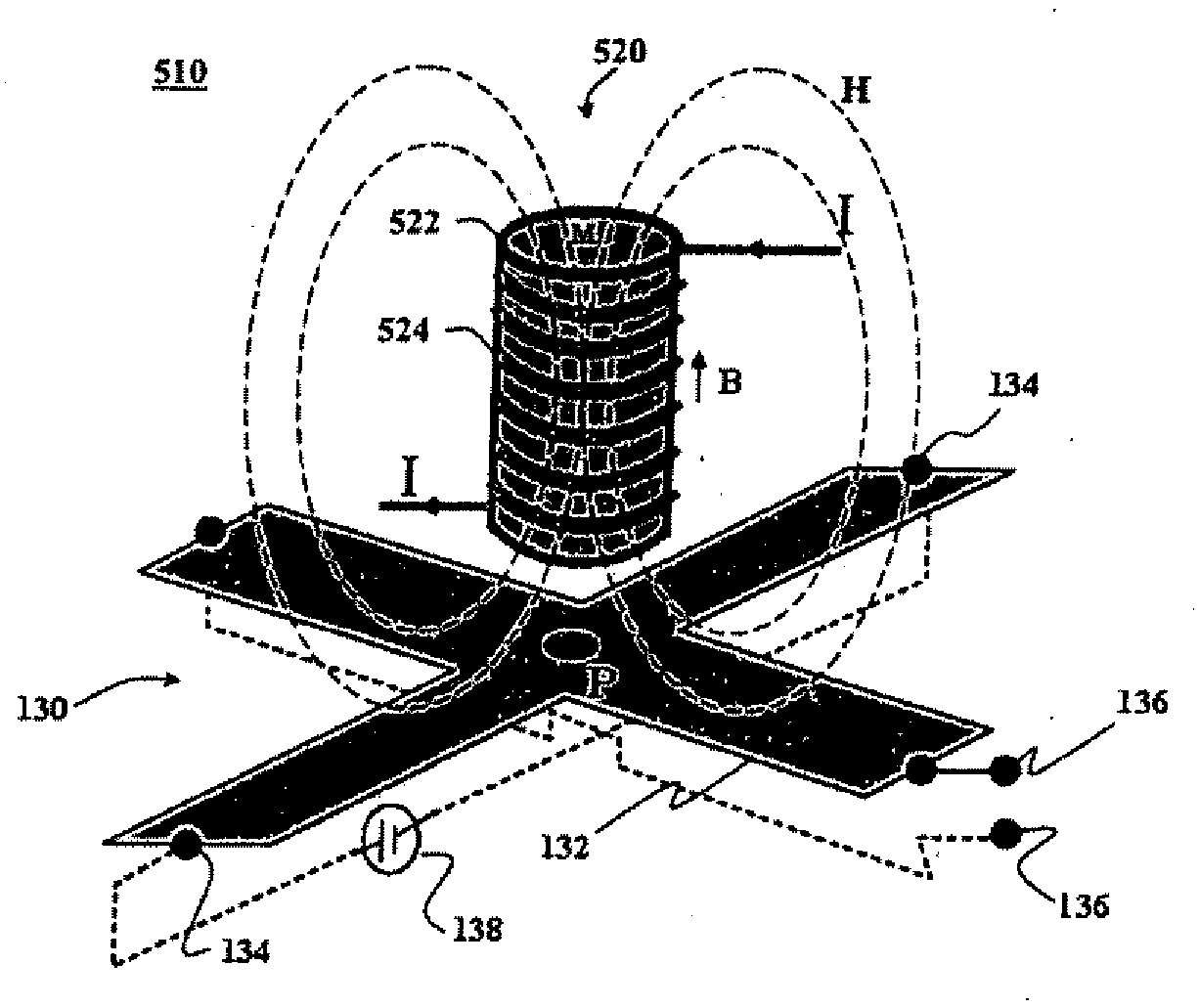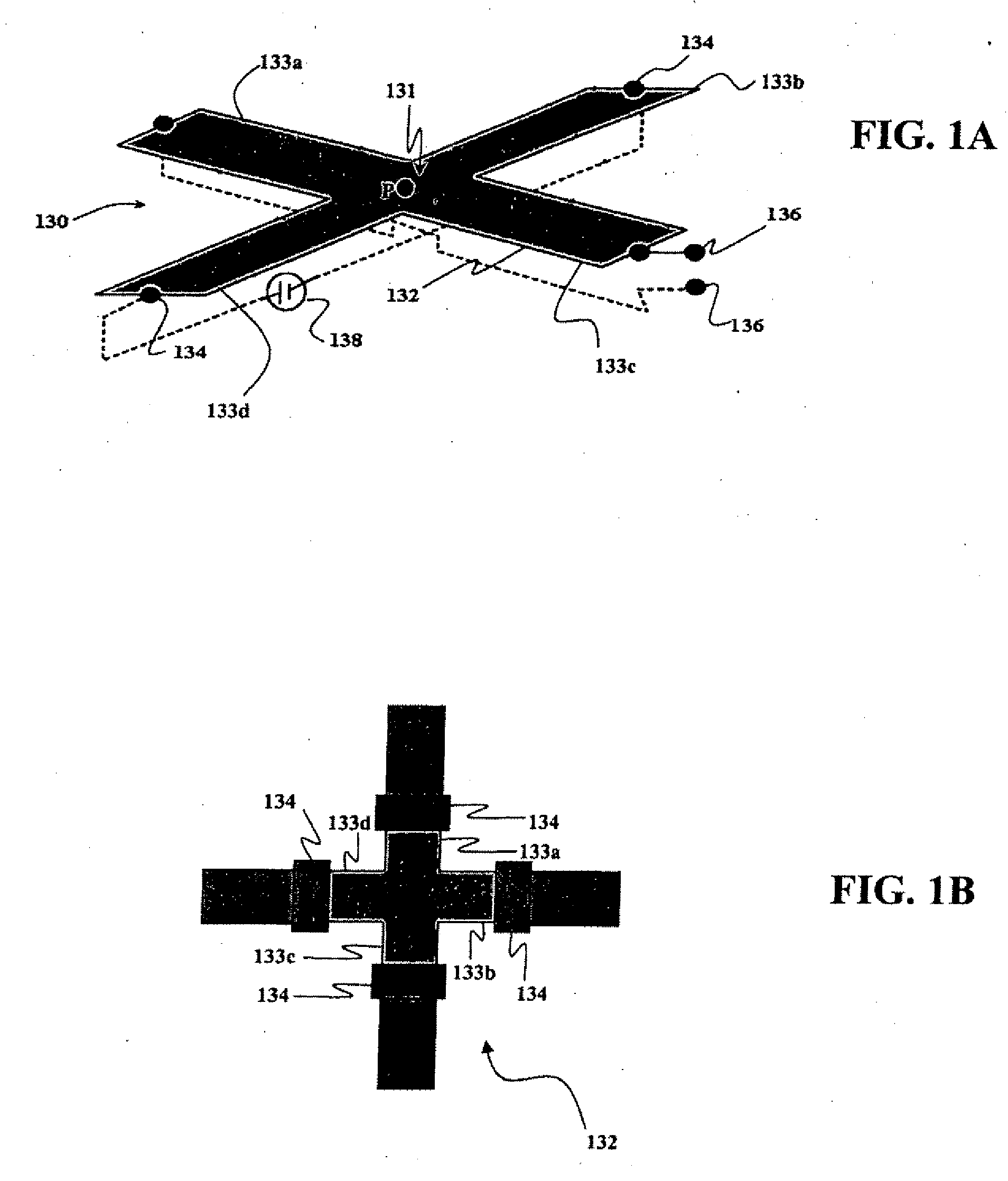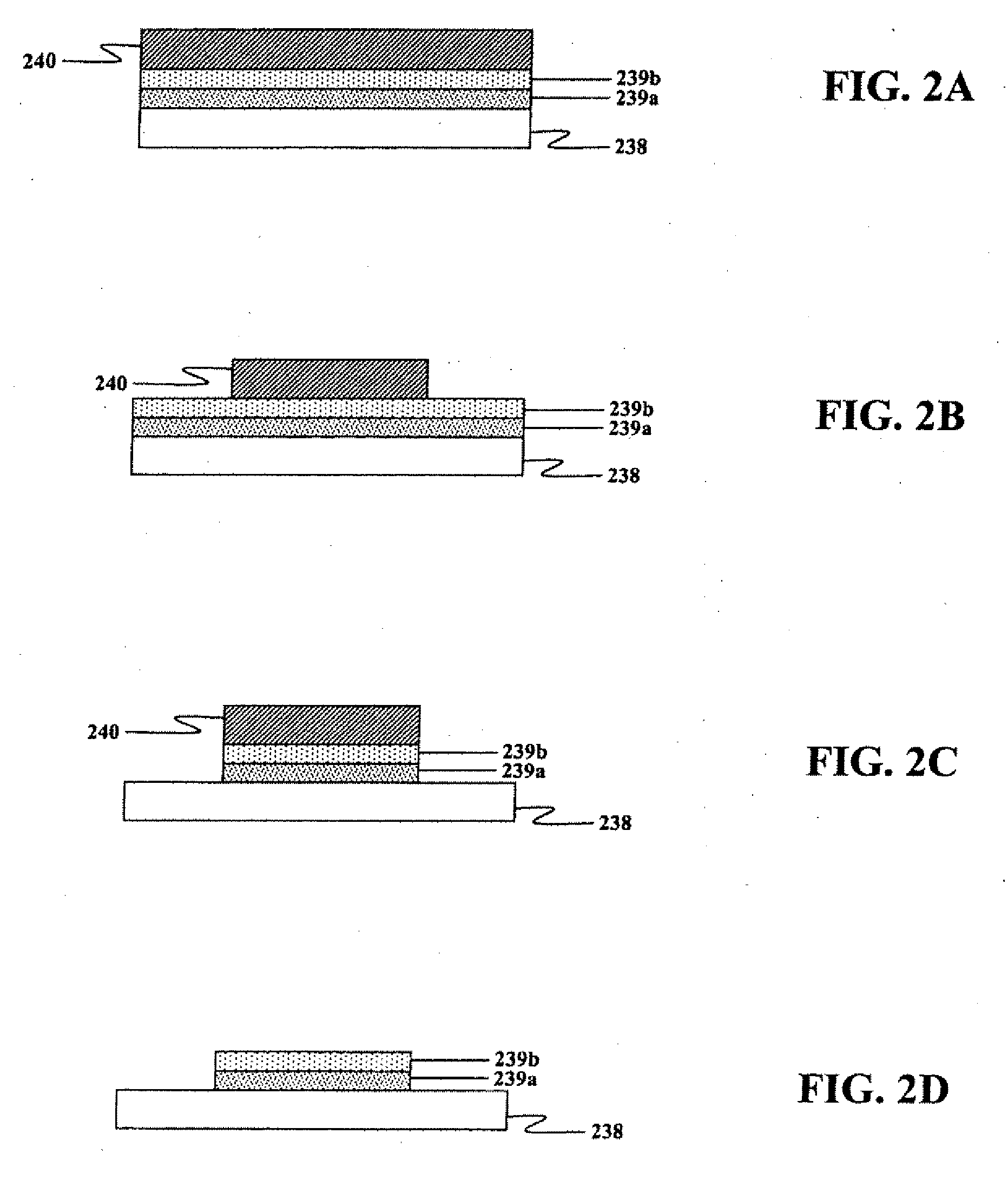Sensor for a magnetic memory device and method of manufacturing the same
- Summary
- Abstract
- Description
- Claims
- Application Information
AI Technical Summary
Benefits of technology
Problems solved by technology
Method used
Image
Examples
Embodiment Construction
General Description
[0041]The invention encompasses methods for making a magnetic memory cell including a Hall effect sensor on a substrate including the steps of:[0042](i) preparing a substrate;[0043](ii) forming an amorphous layer on the substrate on the substrate;[0044](iii) heating the amorphous layer; and[0045](iv) epitaxially growing a material on the amorphous layer.
[0046]In one embodiment, the substrate is a silicon substrate.
[0047]In another embodiment, the amorphous layer is comprised of a group III-V material.
[0048]In another embodiment, the III-V material is a low temperature III-V material.
[0049]In another embodiment, the amorphous III-V material layer is GaAs.
[0050]In another embodiment, the epitaxially grown material is a 2DEG structure.
[0051]In another embodiment, the epitaxially grown material is a 2DEG structure constructed from AGaAs / GaAs.
[0052]In another embodiment, the method further includes using high electron mobility materials to form a Hall effect sensor on ...
PUM
 Login to view more
Login to view more Abstract
Description
Claims
Application Information
 Login to view more
Login to view more - R&D Engineer
- R&D Manager
- IP Professional
- Industry Leading Data Capabilities
- Powerful AI technology
- Patent DNA Extraction
Browse by: Latest US Patents, China's latest patents, Technical Efficacy Thesaurus, Application Domain, Technology Topic.
© 2024 PatSnap. All rights reserved.Legal|Privacy policy|Modern Slavery Act Transparency Statement|Sitemap



